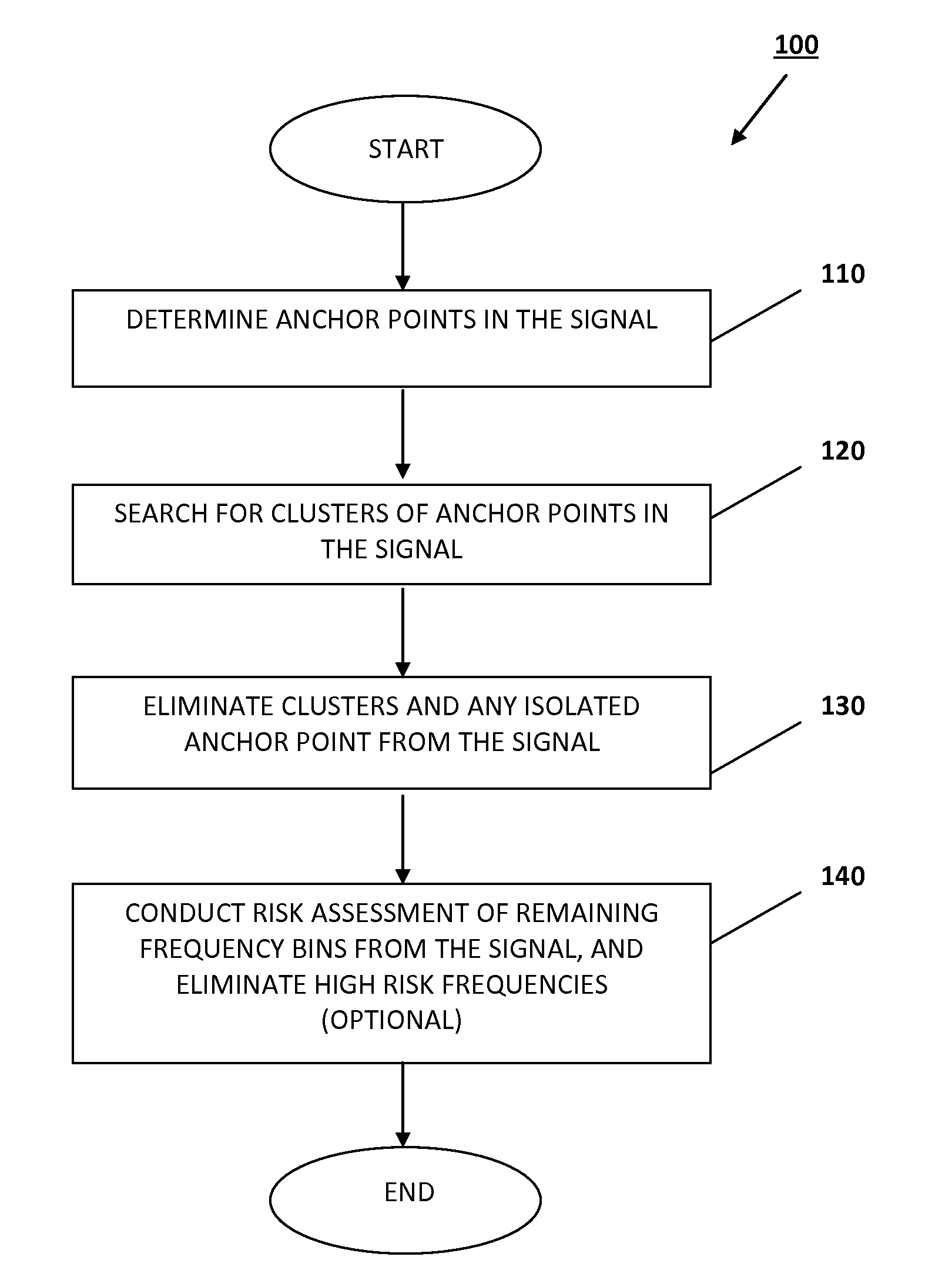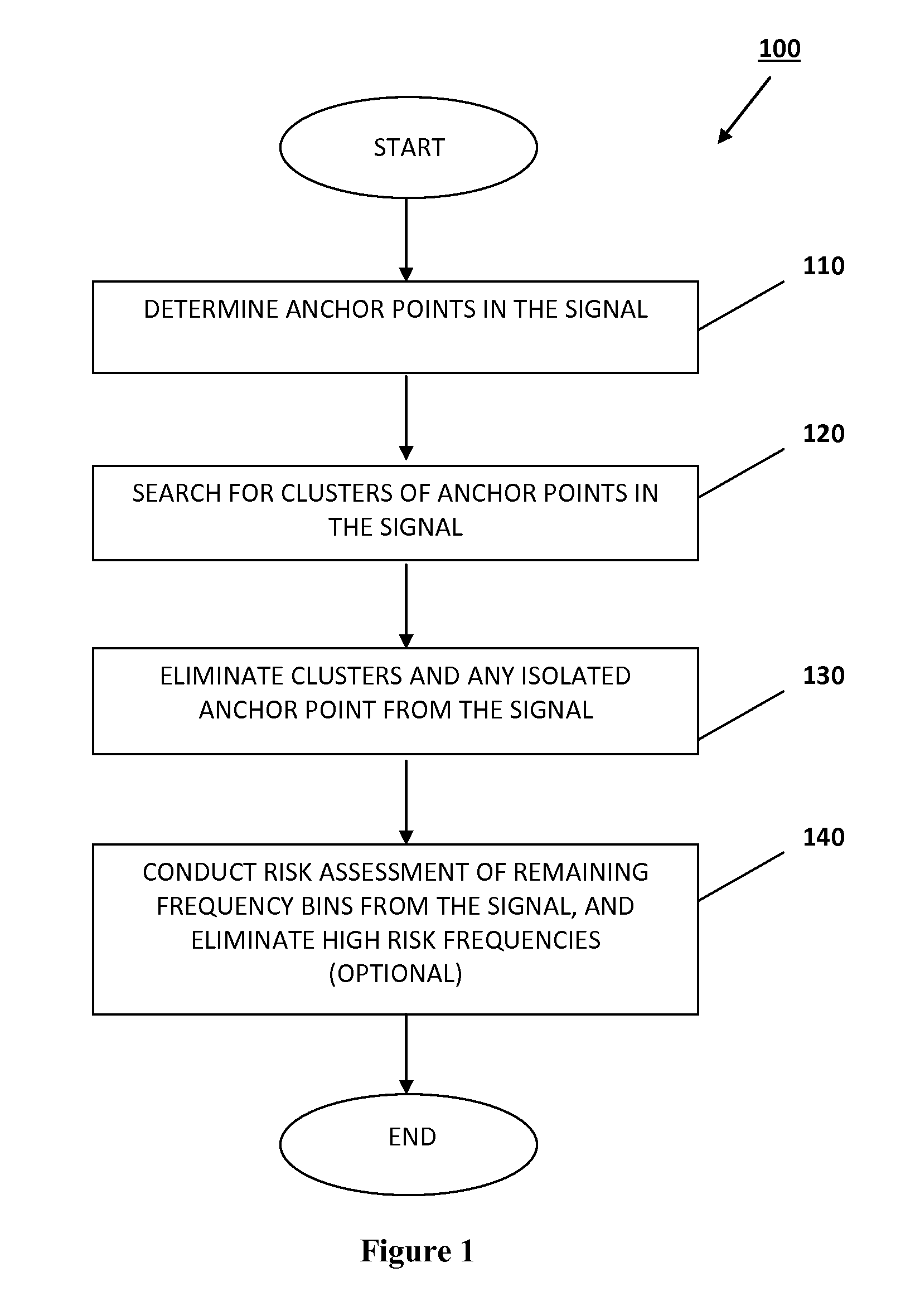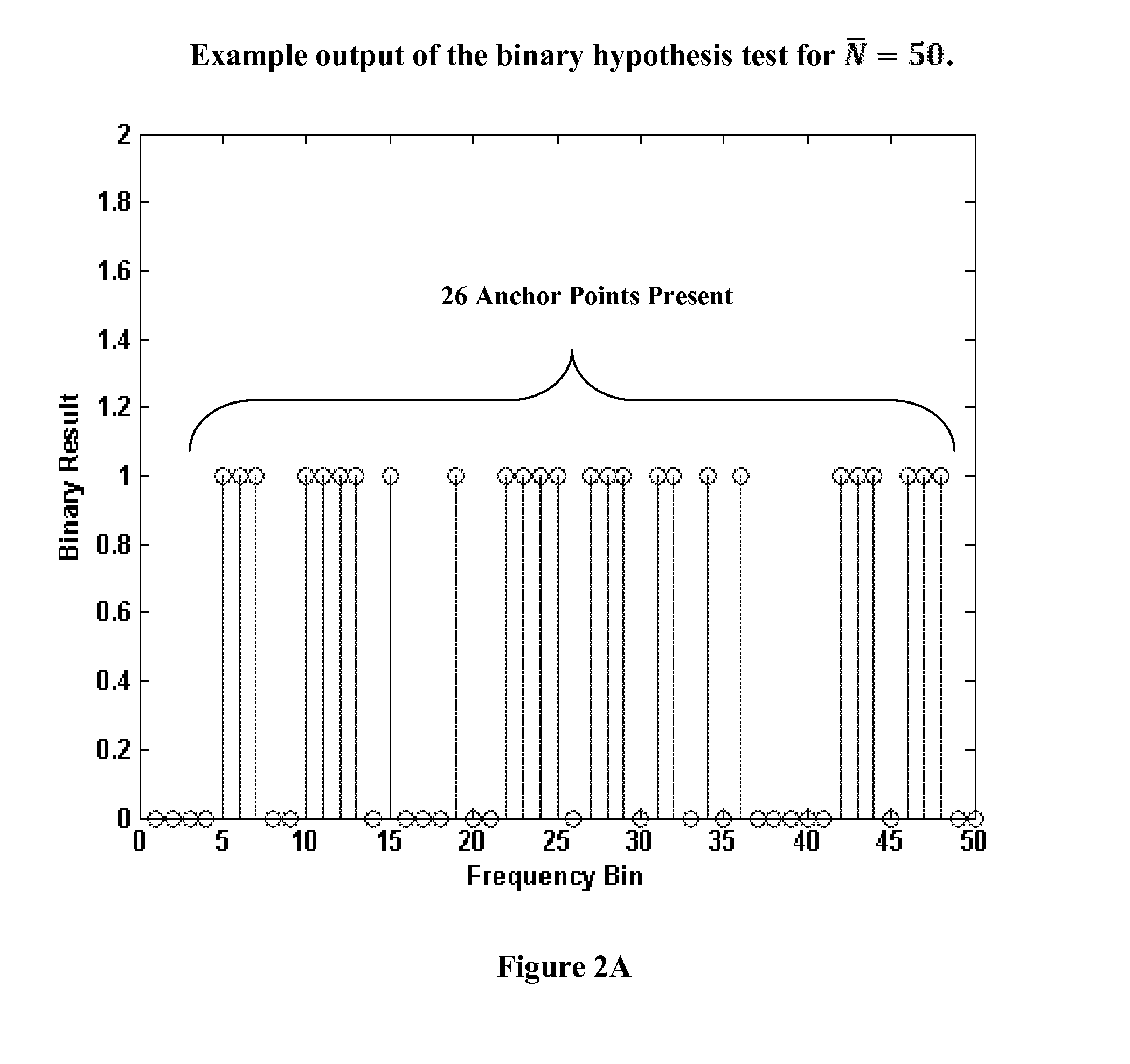Fast method for wideband spectrum sensing
a wideband spectrum and fast technology, applied in the field of rf technology cognition radar and radio, can solve problems such as spectrum utilization
- Summary
- Abstract
- Description
- Claims
- Application Information
AI Technical Summary
Benefits of technology
Problems solved by technology
Method used
Image
Examples
Embodiment Construction
[0022]A unique and innovative fast spectrum sensing methodology is disclosed for radar and radio applications. The methodology includes analyzing RF signals and selecting unused channels, or frequencies, within a wide-frequency band of interest. This method quickly determines and eliminates high-power regions from further consideration. Processing requires use of anchor points to identify high power regions for elimination. Then an optional risk assessment may be performed on noisy nearby frequencies for further elimination since high power interference could leak into a potential unused frequency over time. The remaining “unused” frequencies can serve as potential transmission and / or reception frequencies for RF signals.
[0023]Two criteria may be used to select an unused frequency according to the method: 1) the unused frequency should be substantially devoid of noise; and 2) the surrounding power of the unused frequency should be minimal. These criteria are general for both radar a...
PUM
 Login to View More
Login to View More Abstract
Description
Claims
Application Information
 Login to View More
Login to View More - R&D
- Intellectual Property
- Life Sciences
- Materials
- Tech Scout
- Unparalleled Data Quality
- Higher Quality Content
- 60% Fewer Hallucinations
Browse by: Latest US Patents, China's latest patents, Technical Efficacy Thesaurus, Application Domain, Technology Topic, Popular Technical Reports.
© 2025 PatSnap. All rights reserved.Legal|Privacy policy|Modern Slavery Act Transparency Statement|Sitemap|About US| Contact US: help@patsnap.com



